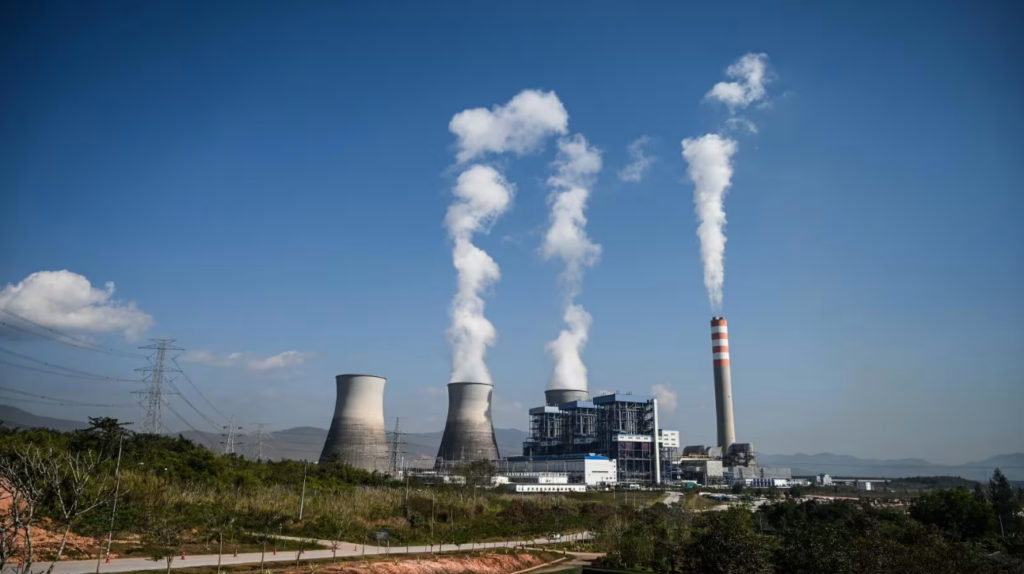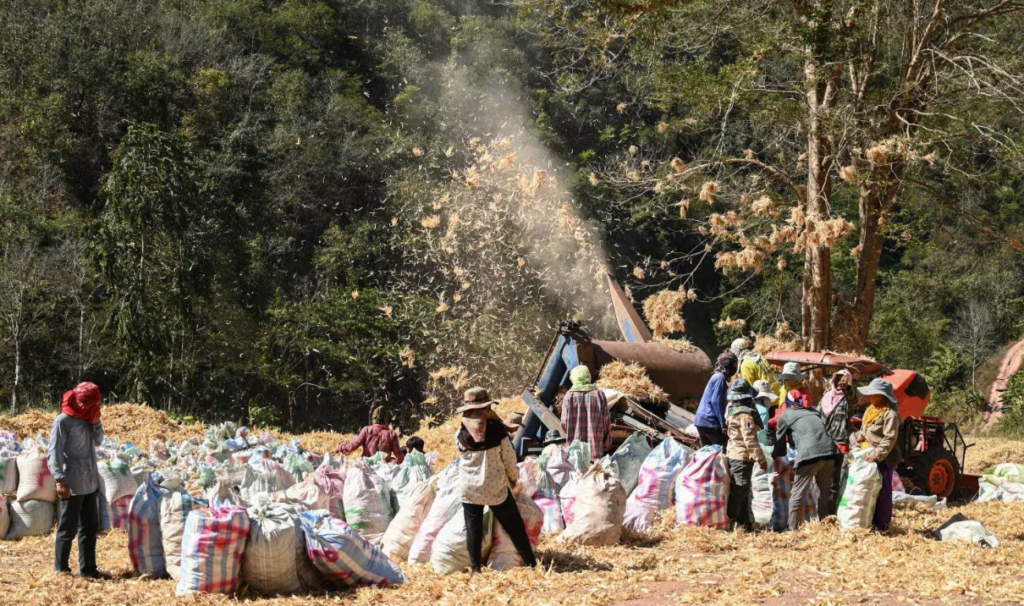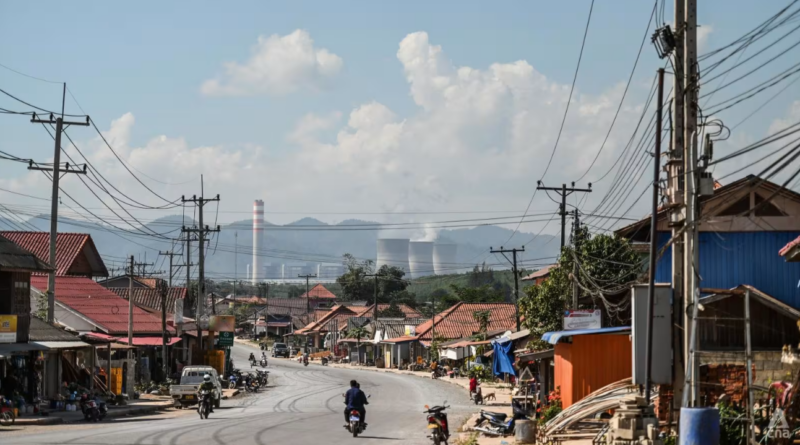Mercury Rising: Why a Thai Community Believes it is Being Poisoned Across the International Border
Source: Channel News Asia
NAN, Thailand: On clear mornings, at dawn, Ms. Kanchanaporn Paeng-ud stands on a hillcrest where her family processes tapioca and looks out beyond the sweeping valleys across to neighboring country Laos.
On the horizon, some 20 km away, she can see what resembles billowing columns of smoke that rise high into the sky. For five months of the year, those man-made clouds dissolve into tiny particles and are carried by the wind into her home country, Thailand.
The source of the emissions is the Hongsa Mine Mouth Power Project, a coal-fired power plant that began energy production in 2015 in Laos’ Xayaboury province.
Since then, villagers in the hills of Nan, a rural northeastern province on the Thai border with Laos, attest to strange things happening to their home and their health.
In the rural district of Chalermprakiat, locals have observed their crops failing through the onset of disease and their soil becoming less fertile. They have been warned not to eat local fish and to be careful about the water they drink. Children, especially, have been beset by respiratory illnesses.
Deep suspicion has festered among villagers, and their fingers have squarely pointed to the polluting plant across the border.
Chalermprakiat is a remote corner of the country, where ethnic Lua people live intimately with the land, harvesting coffee, rice, corn, shrimp, crabs and fish.
Life is basic here but “our community is warm, loving and harmonious”, Ms Kanchanaporn said.
“The villagers are worried because if the impacts really come from the other side, what can we do? We cannot move the village because this is where we were born and the villagers have everything here,” Ms Kanchanaporn said.
After years of data gathering, environmental observations, and citizen science, a powerful correlation has now been drawn between the plant’s operations and the adverse transboundary impacts being experienced in eight Thai villages.
With funding from the Health Systems Research Institute, an autonomous Thai state agency, a team of experts trained in engineering, social science, health, and environmental law have compiled evidence of air, soil, and water being contaminated by heavy metals.
A key aspect was to create innovative air pollution dispersion modeling. The models simulated the emission of acid gases from the power plant’s smokestacks and then the seasonal winds that transport those gases.
“Then we go to collect the samples at those locations where we expect to have different levels of impact,” said Professor Tanapol Penrat from the Faculty of Environmental Engineering at Naresuan University.
“We found that the amount of the pollutant deposited in these areas, which is emitted from the coal-fired power plant, actually correlated with the impact that farmers see and … with the pH (acidity levels) of the soil,” he said.
“So, we conclude that there is a significant contribution from the coal-fired power plant.”
Of greatest concern for the community, is the discovery and rise of an insidious, invincible toxin – mercury.

MERCURY IS FOREVER
Ms Napaporn Pongprasert has been volunteering with the local health station in Nam Ree village for more than four years. She is on the hunt for mercury.
She said she never anticipated her role in the community would involve catching fish for chemical sampling or assisting with hair testing on local women and children.
Mercury is emitted as a gas from power plants during the coal-burning process. It can then spread through the air, water, and soil in surrounding areas.
While mercury in the air is not very toxic, its impact is magnified when it is deposited into water bodies and absorbed by animals or marine organisms.
“It’ll be bio-magnified in fish around 12,000 times the deposited concentration,” Prof Tanapol explained. The expert research team has helped to train local volunteers like Ms. Napaporn and Ms. Kanchanaporn to monitor the environment and measure basic parameters in soil and water and then input that data into a centralized system.
Increasingly over the next year at least, they will also be trained to do more health monitoring.
Fish with mercury levels as high as 0.16mg/kg have been observed in the local area, a reading that has prompted serious concerns among experts. The locations of affected fish correlate with the distribution models prepared by Prof Tanapol.
While this figure is below the maximum admissible levels set by the World Health Organisation – which is 0.5 – the fact that mercury has entered the environment at such a scale in just eight years is problematic.
The Hongsa plant has a 25-year power concession, raising fears about the potential of long-term contamination if the situation is not addressed.
“Even if mercury is released in a tiny amount when it enters the food chain and the ecosystem, it can multiply its toxicity by hundreds of thousands of times. For example, when people eat fish, the toxicity will increase,” said Ms Somporn Pengkam, the director of the research project developing a community health monitoring system in Nan and a health expert from Bangkok’s Chulalongkorn University.
Mercury has also already been detected in the hair samples of women in the eight villages.
Exposure to the metal can have effects on humans’ nervous, digestive, immune, and respiratory systems, lungs, and kidneys. It can cause cancer, as well as brain development issues in babies.
“Because when we take in mercury, the mercury will not build up in the mother’s body but in the fetus as it enters through the umbilical cord. When the baby is born, there might be problems in terms of slow development,” Ms Somporn said.
For Ms Napaporn, a basic, necessary staple for the community is now causing anxiety and confusion.
“The villagers eat fish every day, and we don’t know what’s in there and we have been wondering about it. I was the first who did not dare to eat fish. And I still do not dare to eat fish,” she said.
It is not just the mercury and its indelible impact on the landscape, but the more immediate degradation of farming land that is taking a toll on communities.
Prof Tanapol’s analysis and subsequent field recordings found elevated levels of nitrogen dioxide and sulfur dioxide, both substances formed by the burning of coal. It results in highly acidic soil and then crops diseases, like rice blast and leaf blight.
“We’ve seen abnormalities in the area such as lychees that we grow that don’t form into fruits. In nature, in the forest, we see plants that die easily,” said Mr Jirapat Saensri, deputy chief of the Khun Nan Subdistrict Administrative Organisation.
“And the villagers get less produce than they used to. From our old data, mulberry production was about 200 tonnes per year or per harvest. Now, it’s only 30 or 40 tonnes.”
And while the acidic soil could be potentially restored if the source of the emissions was solved, mercury is a different story. It is a substance that can never be removed from the environment.
“We just cannot wait until the mercury hits an acceptable level,” Prof Tanapol explained.
“Because if there is contamination, even when you stop (emitting), it is still there. Mercury will not be degraded. It will just be in our system. It can stay forever and it could jump from one country to another.”

THAI INVESTMENTS IN OVERSEAS PROJECTS
The Hongsa plant has reshaped the landscape around it. The scars of vast lignite mining, a soft and dirty type of coal that fuels power production, cut deep into the earth that surrounds the facility.
Lignite is considered the lowest quality of coal and generates more carbon dioxide (CO2) than hard coal. It is also considered among the most harmful fossil fuels to human health, due to the high levels of sulfur, nitrogen oxides, mercury, and other pollutants released when it is burnt.
Data from the World Bank in 2020 showed that CO2 emissions in Laos grew by nearly five times in the four years after the Hongsa plant began operations.
Lignite often lowers the electrical efficiency of thermal power plants and can be difficult to transport, hence why the power plant is situated immediately next to the mine site. According to Hongsa Power, the plant is burning approximately 15 million tonnes of lignite per year to generate power that is predominantly being exported to Thailand.
The company itself is principally a Thai venture – it is a consortium 80 percent owned by Thai companies. RATCH Group – whose major shareholder is the Electricity Generating Authority of Thailand (EGAT) – and Banpu Power – a subsidiary of coal giant Banpu – hold 40 percent each, while Lao Holding State Enterprise has 20 percent.
Funding for the project came from nine Thai banks, in a total finance package worth US$3.71 billion, according to Hongsa Power. The company declined to be interviewed for this story.
Thailand is less reliant on coal for energy than many of its regional neighbours but still has about 6GW of installed power inside the country. It has pledged to reach carbon neutrality by 2050 and net-zero greenhouse gas emissions by 2065.
Increasingly over the past decade, Thai companies have shifted energy infrastructure investments across the international border, especially into Laos, where environmental standards are weak and civil society has little influence on public policy.
Included within Thailand’s Power Development Plan, which is a roadmap for the country’s energy policy, are several overseas infrastructure projects in Laos, such as the Xayaburi Hydroelectric Power Plant, a dam on the mainstream of the Mekong River.
As of 2021, Thai companies were involved in 60 percent of the existing power generation in Laos, according to the Stimson Mekong Infrastructure Tracker.
Such projects, just like with the Hongsa plant, typically carry international environmental risks that cannot be scrutinized under Thai regulations.
Ms Wora Sukraroek, a member of the Thailand Extraterritorial Obligations (ETO) Watch Coalition said she believes that the Hongsa plant would have faced many more obstacles if it was constructed or operating in Thailand itself.
“The reason why these Thai companies go out to invest abroad is that this type of project if you did it in Thailand, there will be civil society resistance, protests and so many other things. The environmental impact assessment (EAI) has to go through a public participation process,” she said.
A company building a coal plant would need to do modeling of gas and mercury deposition and develop a rigorous monitoring system.
“I think this project would be delayed in Thailand and the communities in this area would demand compensation based on the impacts.
“All of these factors are the key drivers why they are going out to tap into the resources of neighboring countries,” she said.
Despite the apparent transboundary impacts, no Thai environmental law applies to Hongsa’s operations. Ms Wora said ETO’s goal is to pressure Thai investors to comply with “sustainable, best practice principles” with their overseas practices.
“Or to demand a little bit more accountability to the needs and the interests of the communities and comply with the principle of human rights,” she said, citing the United Nations Guiding Principles on Business and Human Rights.
“At least demonstrate the goodwill of engaging communities, talking about the impacts of the project and disclosing the information that is necessary for the communities to know about the environmental and social impacts that directly impact them and their health,” she added.
Within Thailand, the citizen science model being fostered in Nan – using smartphones and simple sampling – could be a pilot project for more locally-led environmental data gathering, instead of communities being entirely subjected to conclusions reached by consultancy groups engaged by the developers themselves.
As for the Lao population living in close proximity to the plant, Prof Tanapol said this modeling shows that they too are likely experiencing impacts. New relocation villages were built when the plant was constructed to move people away from its immediate surroundings.
But with no ability to perform any tests across the border, there is little firm evidence that could be presented to advocate for the welfare of those communities.

CROSS-BORDER RESPONSIBILITY
What happens next remains unclear. There is almost no prospect of Hongsa Power shutting down its operations.
Installing new technology, such as a catalytic reduction system that could capture the mercury that is currently being emitted, would likely be too expensive for the operation, according to Prof Tanapol.
Instead, a more realistic remedy could be sought through mediation between Hongsa Power and its investing partners and the affected communities.
Communities in Nan have submitted a complaint regarding the transboundary impacts of the project to the National Human Rights Commission of Thailand (NHRC), which subsequently investigated the issues and plans to report its findings and recommendations to the government within the next few months.
“We, the NHRC, proposed to the companies that if they invest in this together, even though it’s situated in Laos, there’s a responsibility to the Thai people who are in the area who might be impacted from this,” said Ms Sayamol Kraiyunwong, National Human Rights Commissioner of Thailand.
“Importantly, the companies must take responsibility for the Lao people as well.
“Even though this isn’t an international convention, it is a universal principle about business and human rights that the whole world accepts,” she said, adding that given the investing companies in the project are listed on the Thai stock exchange, they should be bound by its Good Corporate Governance policy which incorporates sustainable development and environmental considerations.
The NHRC is also working with the ASEAN Intergovernmental Commission on Human Rights to make an agreement that links transboundary environmental rights and human rights, similar to Europe’s Aarhus Convention.
For the researchers, gathering even more evidence in the community will be crucial to improved dialogue with Hongsa Power.
This year, gathering more health baseline data among impacted villagers and strengthening health screening and monitoring will be a major focus, Chulalongkorn’s Ms Somporn said.
They will especially look to improve services and awareness levels among pregnant women – including specialized antenatal care – and preschool-aged children, the most vulnerable groups.
“Even though we cannot completely control the original source to reduce the release (of mercury), at least they know that they can avoid the risks and it can help protect them,” she said.
Living with risks is not the future the villagers of Chalermprakiat desire. But having to move away from their ancestral homeland would be an even more daunting prospect, according to Ms Napaporn.
“We want to eat the way we have always done. We want to use the water the way we have done forever,” she said.
“We love our hometowns. We don’t want to leave.”

